Visit to download the full and correct content document: https://ebookmass.com/product/big-data-analytics-and-machine-intelligence-in-biome dical-and-health-informatics-sunil-kuma-dhal/

More products digital (pdf, epub, mobi) instant download maybe you interests ...
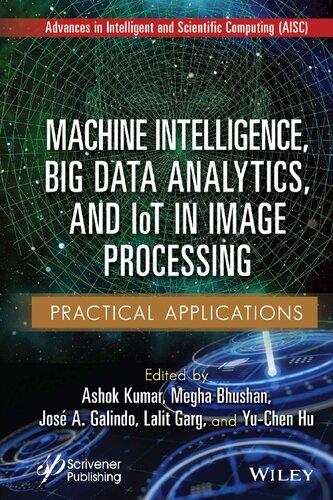
Machine Intelligence, Big Data Analytics, and IoT in Image Processing Ashok Kumar
https://ebookmass.com/product/machine-intelligence-big-dataanalytics-and-iot-in-image-processing-ashok-kumar/
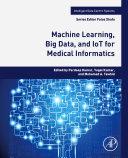
Machine Learning, Big Data, and IoT for Medical Informatics Pardeep Kumar
https://ebookmass.com/product/machine-learning-big-data-and-iotfor-medical-informatics-pardeep-kumar/

BIG DATA ANALYTICS: Introduction to Hadoop, Spark, and Machine-Learning Raj Kamal
https://ebookmass.com/product/big-data-analytics-introduction-tohadoop-spark-and-machine-learning-raj-kamal/
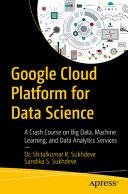
Google Cloud Platform for Data Science: A Crash Course on Big Data, Machine Learning, and Data Analytics Services Dr. Shitalkumar R. Sukhdeve
https://ebookmass.com/product/google-cloud-platform-for-datascience-a-crash-course-on-big-data-machine-learning-and-dataanalytics-services-dr-shitalkumar-r-sukhdeve/
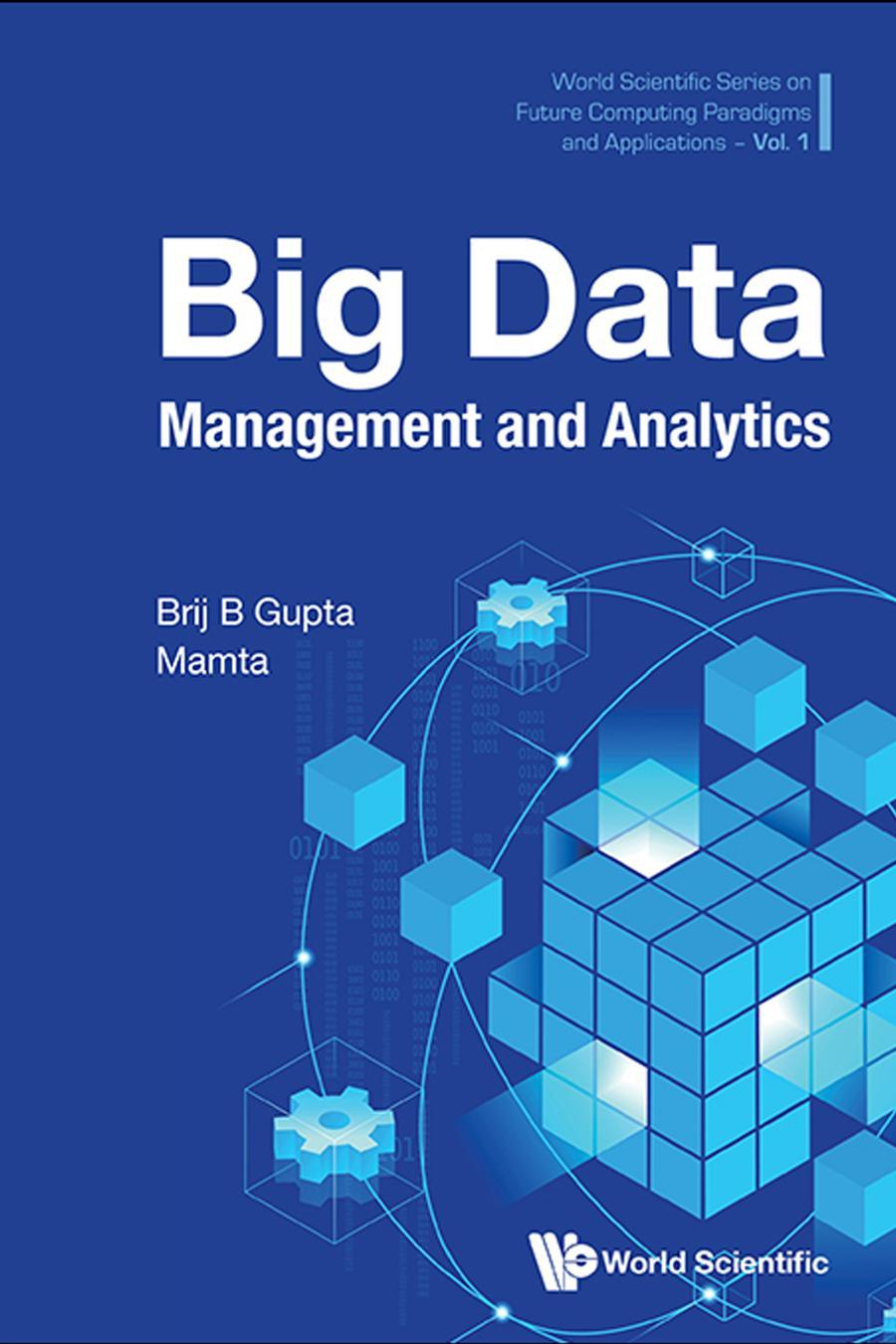
Big Data Management and Analytics Brij B Gupta & Mamta
https://ebookmass.com/product/big-data-management-and-analyticsbrij-b-gupta-mamta/
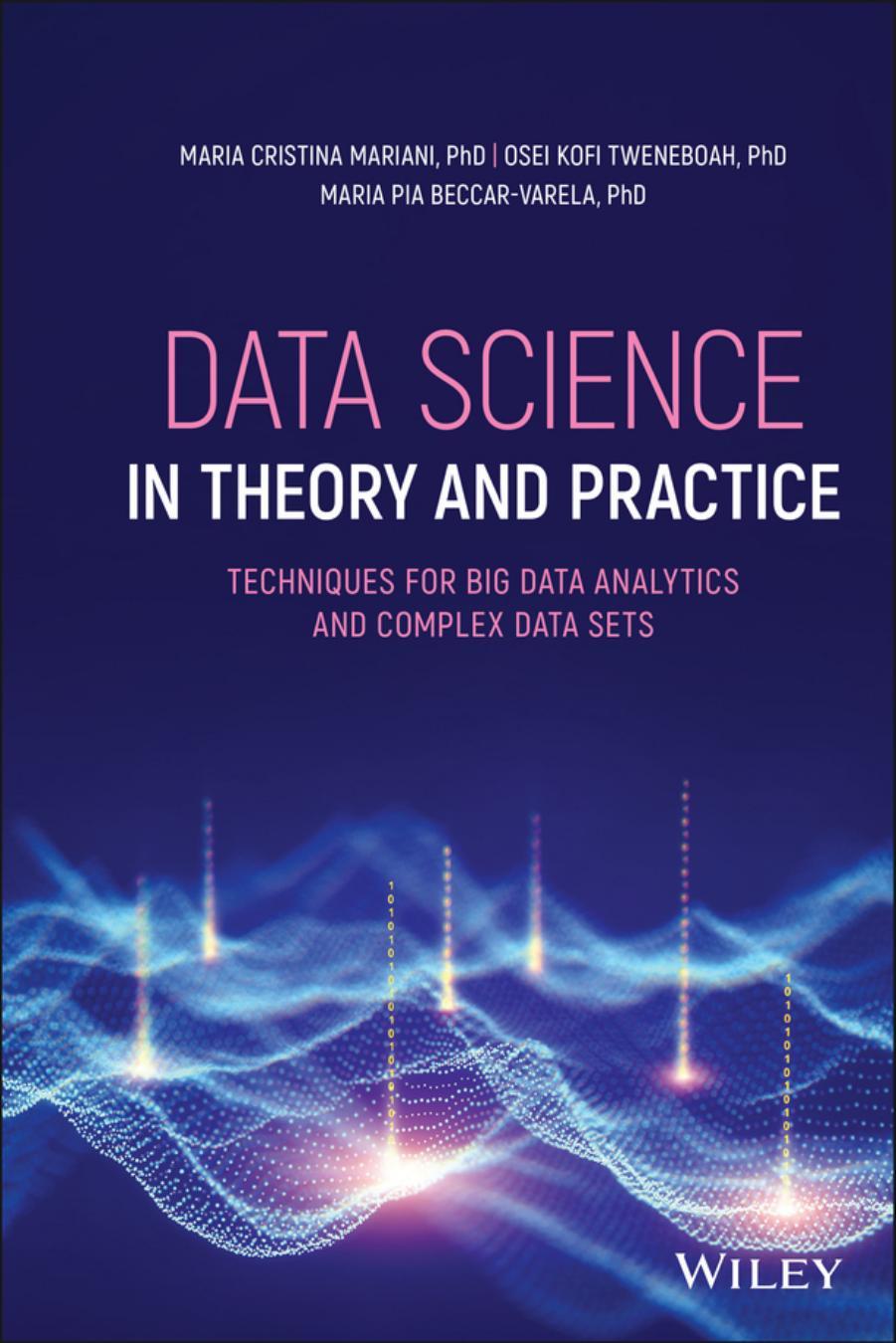
Data Science in Theory and Practice: Techniques for Big Data Analytics and Complex Data Sets Maria C. Mariani
https://ebookmass.com/product/data-science-in-theory-andpractice-techniques-for-big-data-analytics-and-complex-data-setsmaria-c-mariani/
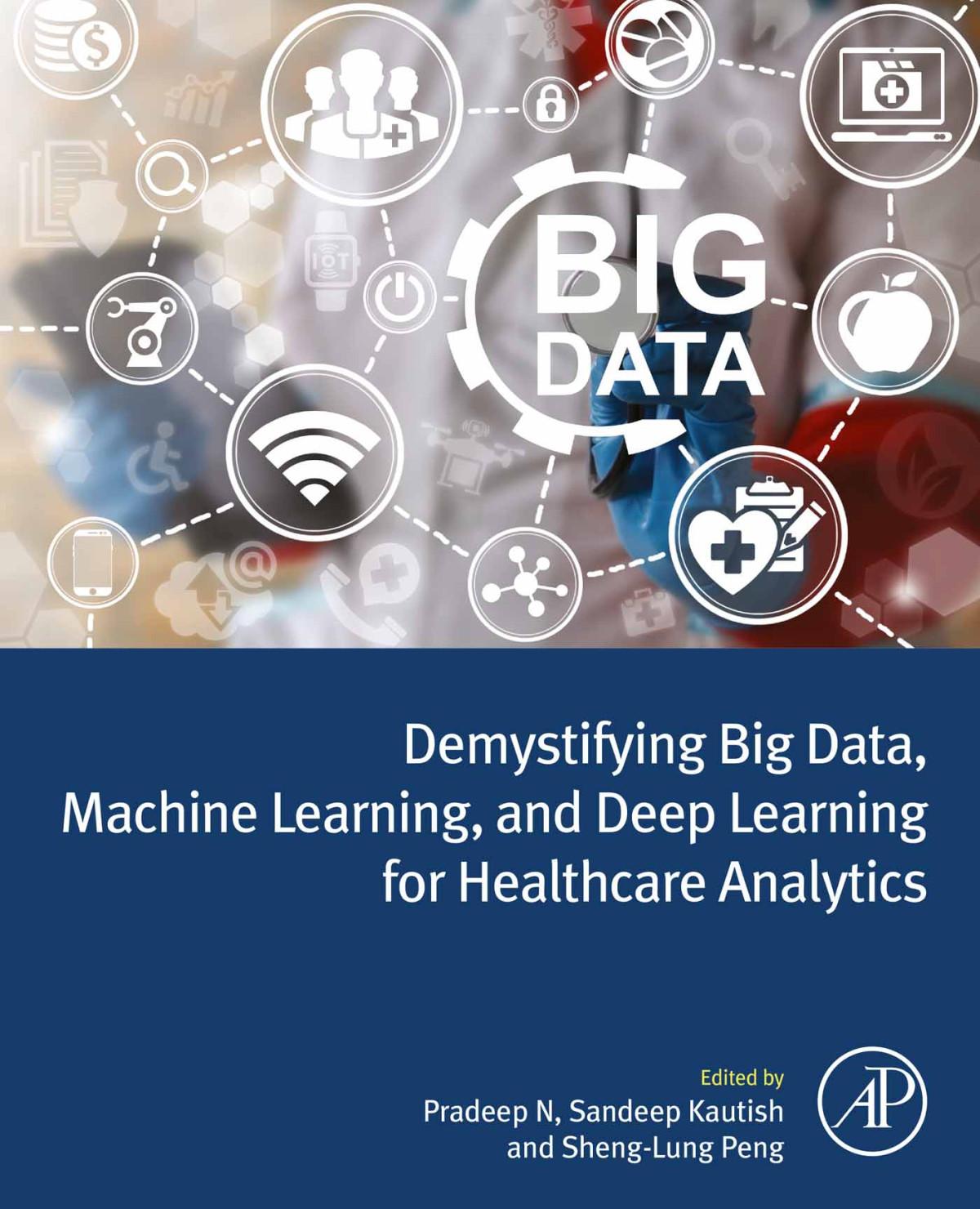
Demystifying Big Data, Machine Learning, and Deep Learning for Healthcare Analytics Pradeep N Sandeep Kautish Sheng-Lung Peng
https://ebookmass.com/product/demystifying-big-data-machinelearning-and-deep-learning-for-healthcare-analytics-pradeep-nsandeep-kautish-sheng-lung-peng/

Advances in Subsurface Data Analytics: Traditional and Physics-Based Machine Learning Shuvajit Bhattacharya
https://ebookmass.com/product/advances-in-subsurface-dataanalytics-traditional-and-physics-based-machine-learningshuvajit-bhattacharya/
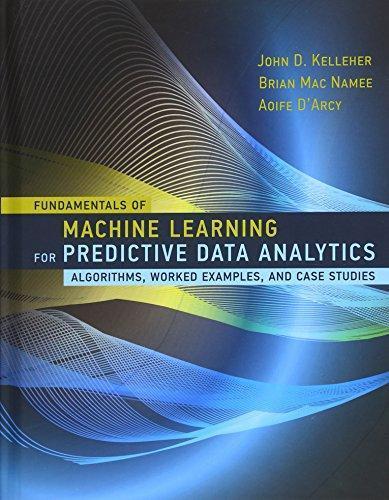
Fundamentals of Machine Learning for Predictive Data Analytics: Algorithms,
https://ebookmass.com/product/fundamentals-of-machine-learningfor-predictive-data-analytics-algorithms/
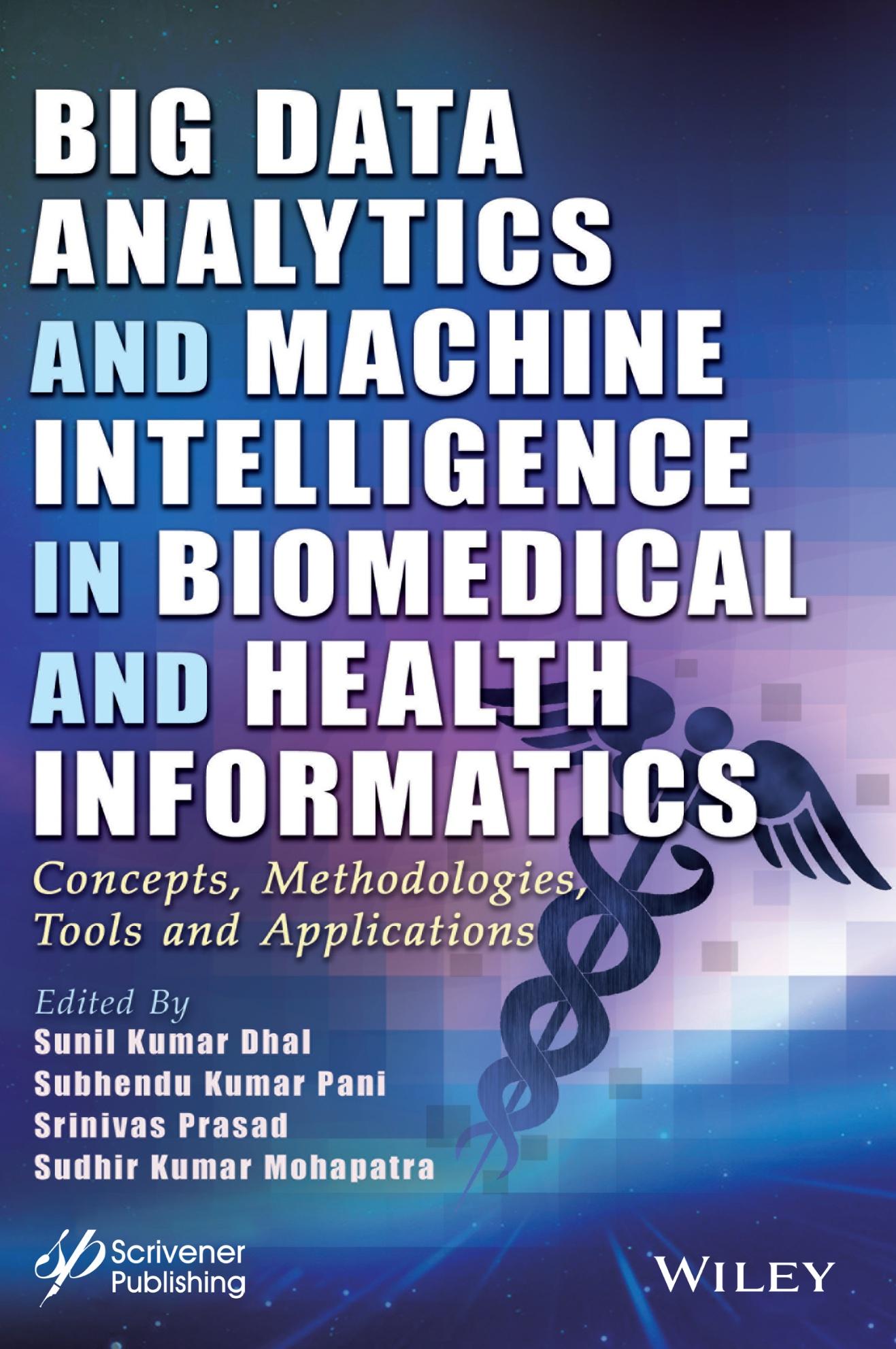
Big Data Analytics and Machine Intelligence in Biomedical and Health Informatics
Scrivener Publishing
100 Cummings Center, Suite 541J Beverly, MA 01915-6106
Publishers at Scrivener
Martin Scrivener (martin@scrivenerpublishing.com)
Phillip Carmical (pcarmical@scrivenerpublishing.com)
Concepts, Methodologies, Tools and Applications
Edited by
Sunil Kumar Dhal
Subhendu Kumar Pani
Srinivas Prasad and
This edition first published 2022 by John Wiley & Sons, Inc., 111 River Street, Hoboken, NJ 07030, USA and Scrivener Publishing LLC, 100 Cummings Center, Suite 541J, Beverly, MA 01915, USA © 2022 Scrivener Publishing LLC
For more information about Scrivener publications please visit www.scrivenerpublishing.com.
All rights reserved. No part of this publication may be reproduced, stored in a retrieval system, or transmitted, in any form or by any means, electronic, mechanical, photocopying, recording, or otherwise, except as permitted by law. Advice on how to obtain permission to reuse material from this title is available at http://www.wiley.com/go/permissions.
Wiley Global Headquarters
111 River Street, Hoboken, NJ 07030, USA
For details of our global editorial offices, customer services, and more information about Wiley products visit us at www.wiley.com.
Limit of Liability/Disclaimer of Warranty
While the publisher and authors have used their best efforts in preparing this work, they make no representations or warranties with respect to the accuracy or completeness of the contents of this work and specifically disclaim all warranties, including without limitation any implied warranties of merchantability or fitness for a particular purpose. No warranty may be created or extended by sales representatives, written sales materials, or promotional statements for this work. The fact that an organization, website, or product is referred to in this work as a citation and/or potential source of further information does not mean that the publisher and authors endorse the information or services the organization, website, or product may provide or recommendations it may make. This work is sold with the understanding that the publisher is not engaged in rendering professional services. The advice and strategies contained herein may not be suitable for your situation. You should consult with a specialist where appropriate. Neither the publisher nor authors shall be liable for any loss of profit or any other commercial damages, including but not limited to special, incidental, consequential, or other damages. Further, readers should be aware that websites listed in this work may have changed or disappeared between when this work was written and when it is read.
Library of Congress Cataloging-in-Publication Data
ISBN 978-1-119-79173-7
Cover image: Pixabay.Com
Cover design by Russell Richardson
Set in size of 11pt and Minion Pro by Manila Typesetting Company, Makati, Philippines
2
Birendra Biswal, Raveendra T., Dwiti Krishna Bebarta, Geetha Pavani P. and P.K. Biswal
5
Hemanta Kumar Bhuyan and Subhendu Kumar Pani
5.1
5.2
5.3
5.1.1
5.1.3
5.4
5.3.1
5.3.2
5.3.3
5.3.4
5.3.5
5.3.6
5.1.3.1
5.1.3.2
5.1.3.3
5.1.3.4
5.4.1
5.4.2
5.4.3
5.5
5.6
5.6.1
5.6.2
5.7
6.6
6.7
6.8
6.2.2
6.2.4
6.2.5
6.9.4
6.9.5
6.9.6
6.9.7
6.9.8
7 A Mathematical-Based Epidemic Model to Prevent and Control Outbreak of Corona Virus 2019 (COVID-19) 187 Shanmuk Srinivas Amiripalli, Vishnu Vardhan Reddy Kollu, Ritika Prasad and Mukkamala S.N.V. Jitendra
7.1
7.1.1
7.1.2
7.2
7.3
7.3.1
7.3.2
8 An Access Authorization
Sowjanya Naidu K. and Srinivasa L. Chakravarthy
8.1
9 An Epidemic Graph’s Modeling
Hemanta Kumar Bhuyan and Subhendu Kumar Pani
9.5
11.5 Case Study-4: Medical Imaging AI with Transition from Academic Research to Commercialization
Case Study-5: ML will Benefit All Medical Imaging ‘ologies’
11.7 Case Study-6: Health Providers will Leverage Data Hubs to Unlock the
Introduction
The novel applications of Big Data Analytics and machine intelligence in biomedical and healthcare sector can be regarded as an emerging field in computer science, medicine, biology application, natural environmental engineering, and pattern recognition. The use of various Data Analytics and intelligence techniques are nowadays successfully implemented in many healthcare sectors. Biomedical and Health Informatics is a new era that brings tremendous opportunities and challenges due to easily available plenty of biomedical data. Machine learning presenting tremendous improvement in accuracy, robustness, and cross-language generalizability over conventional approaches. The aim of healthcare informatics is to ensure the high-quality, efficient healthcare, better treatment and quality of life by efficiently analyzing the abundant biomedical, and healthcare data. Earlier, it was common requirements to have a domain expert to develop a model for biomedical or healthcare; but now the patterns are learned automatically for prediction. Due to the rapid advances in intelligent algorithms have established the growing significance in healthcare data analytics. The IoT focuses to the common idea of things that is recognizable, readable, locatable, controllable, and addressable via the Internet. Intelligent Learning aims to provide computational methods for accumulating, updating and changing knowledge in the intelligent systems and particularly learning mechanisms that help us to induce knowledge from the data. It is helpful in cases where direct algorithmic solutions are unavailable, there is lack of formal models, or the knowledge about the application domain is inadequately defined. In Future Big data analytics has the impending capability to change the way we work and live. With the influence and the development of the Big Data, IoT concept, the need for
AI (Artificial Intelligence) techniques has become more significant than ever. The aim of these techniques is to accept imprecision, uncertainties and approximations to get a rapid solution. However, recent advancements in representation of intelligent system generate a more intelligent and robust system providing a human interpretable, low-cost, approximate solution. Intelligent systems have demonstrated great performance to a variety of areas including big data analytics, time series, biomedical and health informatics etc.
This book covers the latest advances and developments in health informatics, data mining, machine learning and artificial intelligence, fields which to a great extent will play a vital role in improving human life. All the researchers and practitioners will be highly benefited those are working in field of biomedical, health informatics, Big Data Analytics, IoT and Machine Learning. This book would be a good collection of state-of-theart approaches for Big Data and Intelligent based biomedical and health related applications. It will be very beneficial for the new researchers and practitioners working in the field to quickly know the best performing methods. They would be able to compare different approaches and can carry forward their research in the most important area of research which has direct impact on betterment of the human life and health. This book would be very useful because there is no book in the market which provides a good collection of state-of-the-art methods of Big Data, machine learning and IoT in Biomedical and Health Informatics. Various models for biomedical and health informatics is recently emerged and very unmatured field of research in biomedical and healthcare. This book would be very useful because there is no book in the market which provides a good collection of state-of-the-art methods of for Big data analytics based models for healthcare.
Organization of the Book
The 12 chapters of this book present scientific concepts, frameworks and ideas on biomedical data analytics from the different biomedical domains. The Editorial Advisory Board and expert reviewers have ensured the high caliber of the chapters through careful refereeing of the submitted papers. For the purpose of coherence, we have organized the chapters with respect to similarity of topics addressed, ranging from issues pertaining to the internet of things for biomedical engineering and health informatics, computational intelligence for medical data processing and Internet of medical things.
In Chapter 1, “An Introduction to Big Data Analytics Techniques in Healthcare”. Anil Audumbar Pise presents the use of big data analytics in medicine and healthcare which is incredibly powerful, productive, interesting, and diverse. It integrates heterogeneous data like medical records, experimental, electronic health, and social data in order to explore the relations among the different characteristics and traces of data points like diagnoses and medication dosages, along with information such as public chatter to derive conclusions about outcomes. More diverse data needs to be combined into big data analysis, such as bio-sciences, sensor informatics, medical informatics, bioinformatics, and health computational biomedicine to get the truth out of its information.
In Chapter 2, “Identify Determinants of Infant and Child Mortality Based Using Machine Learning: Case Study on Ethiopia” Sudhir Kumar Mohapatra, Srinivas Prasad, Getachew Mekuria Habtemariam, Mohammed Siddique developed predictive models using four supervised machine learning techniques namely C5.0 Decision tree, Random Forest, Support Vector Machine and Naïve Bayes algorithms using the 2016 EDHS dataset of 10,641 records. The Ethiopian government doing for the past two decades for attaining millennium development goals agenda for preventing childhood mortality by improving the child health’s to change the country image to the rest of the world in reduction of childhood mortality. This study contributes some values in the improvement of childhood health by analyzing the determinants infant and child mortality by using machine learning techniques. Different reports indicate that the distribution of childhood mortality differs in the world.
In Chapter 3, “Pre-Trained CNN Models in Early Alzheimer’s Prediction Using Post-Processed MRI” Kalyani Gunda and Pradeepini Gera test MRI Scan with Dementia or Not by Non-image MRI Evidence using Random Forest Classifier which obtained 87% accuracy without false prediction and also by predicting Alzheimer’s Progression using advanced CNN models. Gentle Dementia is more focused to train the Early Detection by omitting converted MRI Sessions. Various Transfer Learning Deep Neural Networks like Residual Network (ResNet50), GoogleNet, VGG19 (Visual Geometric Group), MobileNet, AlexNet is compared to classify Alzheimer’s. Model comparison evaluated to explicate model efficacy.
In Chapter 4, “Robust Segmentation Algorithms for Retinal Blood Vessels, Optic Disc, and Optic Cup of Retinal Images in Medical Imaging” Birendra Biswal, Raveendra T., Dwiti Krishna Bebarta, Geetha Pavani P. and P.K. Biswal discussed the several robust segmentation algorithms such as a new statistical-based Kurtosis test, a novel hybrid active contour method with a new pre-processing technique is applied to fundus images of human
eyes for observing the changes in Retinal Blood Vessels and Optic Disc & Optic Cup to classify as healthy or diseased eyes.For validating all these robust segmentation algorithms standard metrics are used in evaluating the performance of segmentation models. Consequently, the experimental result and comparison analysis are presented to estimate the efficacy of the proposed algorithm. As a result, standard metrics of the proposed algorithm were compared with many other previous methods suggested by various researchers and it is confirmed as to attain better efficacy values.
In Chapter 5, “Analysis of Healthcare Systems Using Computational Approaches” Hemanta Kumar Bhuyan and Subhendu Kumar Pani highlight recent contributions and efficiency of AI and ML in computer systems development for better healthcare and precision medicine. Despite various traditional and AI-based solutions, current healthcare constraints and challenges include uneven distribution of resources towards the future of digital healthcare. Unmet clinical research and data analytics requires the development of intelligent and secure systems to support the transformation of practices for the worldwide application of precision medicine. Overarching goals include new multifunctional platforms that incorporate heterogeneous clinical data from multiple platforms based on clinical, AI, and technical premises. It must address possible challenges that continue to slow the progress of this breakthrough approach.
In Chapter 6, “Expert Systems in Behavioral and Mental Healthcare: Applications of AI in Decision-Making and Consultancy” Shrikaant Kulkarni Present the latest technological advancements so as to showcase futuristic challenges and a glance at potential innovations on the horizon. The treatise enumerates the expert systems in behavioral and mental healthcare areas. It also further discusses the benefits AI can offer to behavioral and mental healthcare.
In Chapter 7, “A Mathematical-Based Epidemic Model to Prevent and Control Outbreak of Corona Virus 2019 (COVID-19)” Shanmuk Srinivas Amiripalli, Vishnu Vardhan Reddy Kollu, Ritika Prasad, Mukkamala S.N.V. Jitendra provide a preliminary evolutionary graph theory based mathematical model was designed for control and prevention of COVID19. In the proposed model, well known technique of social distancing with different variations are implemented. Lockdown by many countries leads to the decrease of Gross Domestic Product (GDP) and increase in mental problems in citizens. These two problems can be solved by the administration of antivirus in some form to the public as a counterpart to the virus. This model works more effectively with high percolation of antiviral nodes in a population and over a period of time. There should be an exponential growth of antivirus nodes to heal the infected population.
In Chapter 8, “An Access Authorization Mechanism for Electronic Health Records of Blockchain to Sheathe Fragile Information” Sowjanya Naidu K. and Srinivasa L. Chakravarthy focuses on maintaining the patient records in the blockchain immutable ledger which allows the doctors to upload the patient records and give access to other doctors and also impose certain rights to the patients to revoke the access to everyone which provides security to the patient’s records. This can also be extended to the insurance providers where they use the immutable ledger of the Electronic Health Records chain to check the patient’s records and payments. Block chain technology allows the patients to assign access rules for their medical data. Block chain technology is expected to improve the Electronic Health records management and the claim process by the insurance agencies also. Not only does the Blockchain enhance the security of the data but it also helps to reduce the long and tedious process of the interhospital transfers and simplifies the process of record keeping of the Electronic Health Records. This work is beneficial to many stakeholders who are related to the medical system to carry better health services and provide security to the user’s rights of protecting the data. An attempt has been made to design a framework for the individuals to access the data on the blockchain. The frameworks propose a layered approach for accessing the data of the patient by different stakeholders.
In Chapter 9, “An Epidemic Graph’s Modeling Application to the COVID-19 Outbreak” Hemanta Kumar Bhuyan and Subhendu Kumar Pani present a novel machine learning approach that can estimate any epidemiological model’s parameters based on two types of information: either static or dynamic. It primarily utilizes the Graph model using deep learning approaches and Long-term memories (LSTMs) to obtain mobility data’s spatial and temporal properties of SIR and SIRD models. It runs and simulates using data on the Italian COVID dynamics and compares the model predictions to previously observed epidemics.
In Chapter 10, “Big Data and Data Mining in e-Health: Legal Issues and Challenges” Amita Verma and Arpit Bansal focus on the legal framework with respect to privacy in India and a comparison of the same with other countries. E-Health is a rising industry. At a time when physical healthcare facilities are full of COVID19 patients, the e-Health Industry has become even more diverse and is being resorted to as primary healthcare system specially to treat regular health problems.The health data of millions of patients is being stored online. The same is done through the concept of Big Data and Data Mining in e-Health. In India, National Digital Health Mission is aimed towards the use of this technique to simplify e-Health services.
In Chapter 11, “Basic Scientific and Clinical Applications” Manna Sheela Rani Chetty and Kiran Babu C. V. discuss the various applications and its significant advancements in medicine and health care. Appling the principles of computer science and information science to the advancement of research in the area of life sciences, health professions education, public health, patient care, etc. can be considered as biomedical and health informatics (HI). The integrative field and multidisciplinary focuses on health information technologies, and involves the computer, cognitive, and social sciences. Informatics is one of the sciences which reflects how to use data, information and knowledge to improve human health and the delivery of health care services. HI studies the effective use of probabilistic information for decision making. The combination of both has greatest potential to rise quality, efficacy and efficiency of treatment and care.
In Chapter 12, “Healthcare Branding Through Service Quality” Saraju Prasad and Sunil Dhal offer a deep insight into the service quality model dimensions in healthcare. In India the healthcare services can be divided into two categories like public and private healthcare services. The Public Healthcare System (PHC) which is under the control of government is available in cities and rural areas and provides services mostly primary services. Majority of the private sector healthcare service providers are in metropolis, capital cities and few others cities of the country mostly focused on secondary and tertiary services. India got the competitive advantages in maximum number of experienced medical practitioners.
Concluding Remarks
The chapters of this book were written by eminent professors, researchers and those involved in the industry from different countries. The chapters were initially peer reviewed by the editorial board members, reviewers, and those in the industry, who themselves span many countries. The chapters are arranged to all have the basic introductory topics and advancements as well as future research directions, which enable budding researchers and engineers to pursue their work in this area.
Big Data Analytics and machine intelligence in biomedical and health informatics is so diversified that it cannot be covered in a single book. However, with the encouraging research contributed by the researchers in this book, we (contributors), editorial board members, and reviewers tried to sum up the latest research domains, developments in the data analytics field, and applicable areas. First and foremost, we express our heartfelt appreciation to all the authors. We thank them all for considering
Preface xix
and trusting this edited book as the platform for publishing their valuable work. We also thank all the authors for their kind co-operation extended during the various stages of processing of the manuscript. This edited book will serve as a motivating factor for those researchers who have spent years working as crime analysts, data analysts, statisticians, and budding researchers.
Dr. Sunil Kumar Dhal
Professor IT, Sri Sri University, Odisha, India
Dr. Subhendu Kumar Pani
Principal, Krupajal Computer Academy, BPUT, India
Dr. Srinivas Prasad
GITAM Institute of Technology, Visakhapatnam Campus, India
Dr. Sudhir Kumar Mohapatra Addis Ababa Science and Technology University, Addis Ababa, Ethiopia
March 2022



